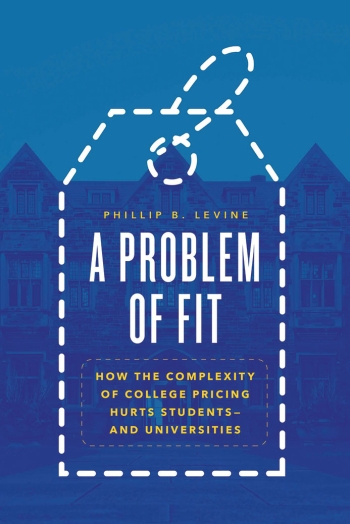Phillip Levine, the Katharine Coman and A. Barton Hepburn Professor of Economics at Wellesley and the creator of the MyinTuition college-cost calculator, has been using statistical models to think about social issues since the beginning of his academic career. His new book addresses the vast, complex, and often mind-boggling world of college price-setting and financial aid.
How does a college’s “sticker price” complicate the ability of students and their families to evaluate affordability?
Basing college decisions just on sticker price is a very bad financial strategy for all but the wealthiest families. In the country as a whole, only 13% of students who attend four-year residential colleges pay the full sticker price. Everyone else receives financial aid and pays less than that. If you don’t know how much something costs, how can you make an educated decision regarding whether to buy it? That isn’t rocket science.
How can prospective students assess a school’s affordability?
At institutions that don’t use MyinTuition, they are still required by law to offer tools called “net price calculators.” These tools [must] be offered at every institution on their websites. Mostly they are not particularly user-friendly, and their completion rates are not high. For students/families considering these schools, I would still recommend that they slog through that process. It will provide useful information. But it should be easier.
Do you find yourself getting involved in the concerns about financial aid raised by your students?
I certainly do. I also hear about those issues now more than in the past, because my students often know about the work that I do with college pricing. It is not uncommon for one of my students to seek me out for advice to handle issues they are facing with their financial aid. … The staff in that office are highly skilled in dealing with all of the complexities of the system, but students aren’t. Sometimes when they communicate with each other, the message isn’t always clear. My job as a professor is to (hopefully!) translate complexity into concepts that students can understand, and I definitely have done that for my students and helped them resolve their dilemma.
How can policy address the lack of transparency in college pricing?
Of course, I have some self-interest in the answer to that question! I think more schools should use MyinTuition. (Note that it is a nonprofit organization, so my “self-interest” is not financial.) I think that the law requiring net price calculators could be modified to address some of the deficiencies of those tools, but, as we all know, that is not an easy process, particularly in the current political environment. This is a problem that higher education institutions will likely need to solve themselves through that process. It will provide useful information. But it should be easier than that.
Bader is a reporter for the Lewiston Sun Journal in Maine.








We ask that those who engage in Wellesley magazine's online community act with honesty, integrity, and respect. (Remember the honor code, alums?) We reserve the right to remove comments by impersonators or comments that are not civil and relevant to the subject at hand. By posting here, you are permitting Wellesley magazine to edit and republish your comment in all media. Please remember that all posts are public.